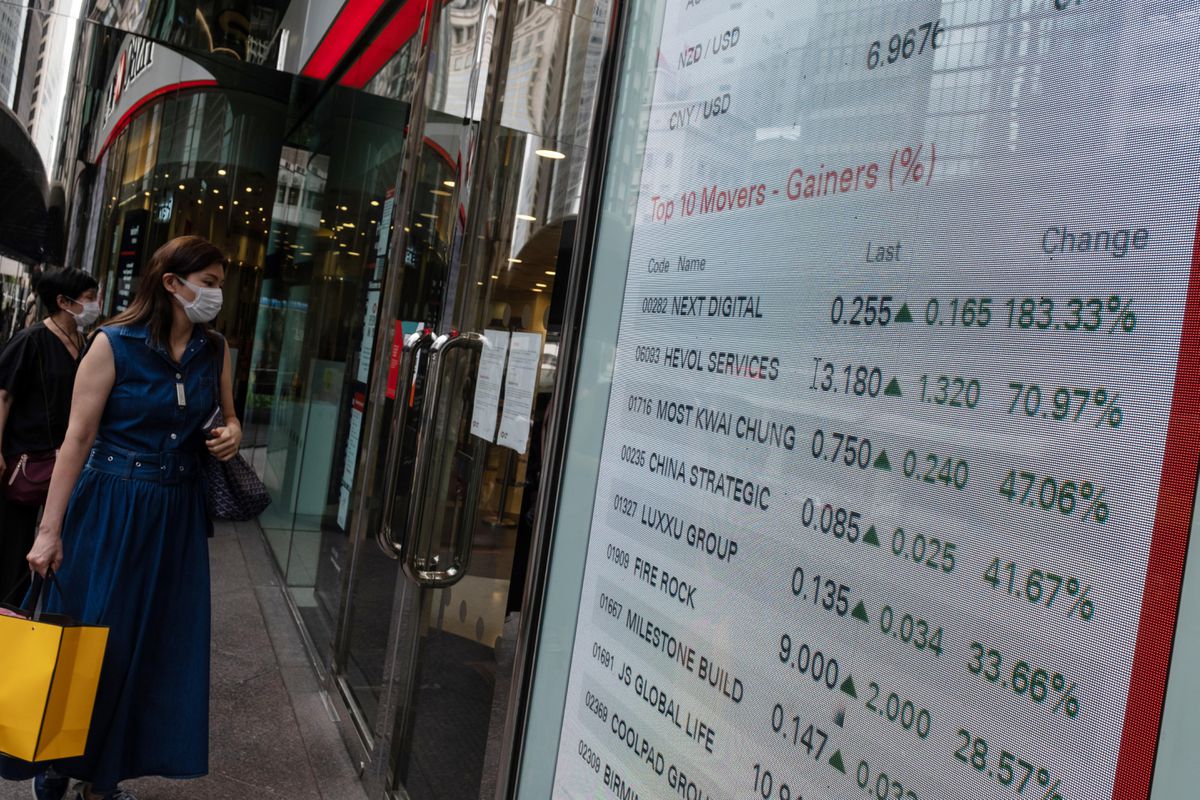Science says the coronavirus is still marching across the globe. Which it is, of course. India isn’t even past peak yet. Southeast Asia is seeing a rise in cases.
The bulk of humanity says: let’s learn to live with this and move on. So long as hospitals are not overrun with sick patients, then this is as good as it gets until there’s a vaccine or therapeutics knock this thing out for the count. If the stock market is right, Wall Street sees things exactly the same.
The S&P 500 continues to rise like the coronavirus case load. Last week, it capped its longest winning streak of the year and Monday was another up day. The index is at an all-time high. The bears are being crushed. People who hate markets are infuriated.
“We still think that markets advance for a number of reasons,” says Mark Haefele, CIO of UBS Global Wealth Management. He names progress on Covid-19 treatments and vaccines all lowering the risk of renewed full lockdowns worldwide. The fact that lockdowns are no longer part of any serious conversation, barring a severe second wave equal to the first wave, then the economy can return faster and companies on the verge of going belly up will be made whole again.
Last weekend, the U.S. Food and Drug Administration said that a coronavirus treatment using blood plasma donated by people who have recovered from the disease has been approved. Meanwhile, the Trump administration is reportedly considering fast-tracking an experimental vaccine being developed by AstraZeneca and Oxford University for use here as part of Operation Warp Speed.
China is already allowing for the CanSino Biologics vaccine to be used among its military.
“Medical progress will support markets broadly,” says Haefele.
Where cases are on the rise, markets will sell. Where the coronavirus has plateaued and countries are treating sick patients, lowering death tolls, markets will rise.
Moreover, low bond yields in Europe are also supportive of foreign capital flows into the U.S. and into emerging market stocks and bonds. Haefele tells investors not to be intimidated by record highs in the S&P 500. Laggards and long-term themes are likely to support the next leg up, he says. “We favor themes such as 5G, China’s new economy, and the food revolution,” he says, a nod to plant based protein companies.
U.S. Growing. Emerging Markets…Emerging
Last week, Markit’s Flash PMIs pointed to a stronger economy in the U.S. The Flash Manufacturing PMI rose to 53.6 from July 52. Anything over 50 is a positive. It’s being driven in part by an improvement in new orders, which means companies are buying.
On the services side, the PMI also ticked higher, up to 54.8 from 51 in the month prior.
Second quarter earnings have exceeded estimates by around 22% in aggregate, with some 80% of companies actually beating their projections.
“The recent flow of economic readings has been broadly positive. The hoped-for recovery is near,” says Jason Pride, CIO of private wealth at Glenmede.
Nick Niziolek, Co-CIO fund manager at the Calamos Evolving World Growth Fund (CNWIX) says investors are still sitting on tons of cash. It’s been waiting for the market to fall. The market’s not falling.
I’ve been calling it the Honey Badger Market. Honey Badger don’t care; “it runs backwards, it just takes what it wants.”
Eventually, those holding cash are going to dip in. Who will benefit from that fresh flow of capital?
“Ultimately, when you look at the overweight most investors have toward the U.S. markets—and especially a very concentrated number of names—there are a lot of opportunities overseas” says Niziolek. “When you start to see that capital shift, that’s a long tailwind for emerging markets,” he says.
“We are bullish equities,” says Vladimir Signorelli, head of Bretton Woods Research.
Despite all states reopening for business, a second wave of Covid-19 infections has led to new restrictions in many states. Some schools have reversed course on in-person learning, opting for full virtual. Although infection levels have crept higher than they were in March and April, the daily fatality rate is below March and April levels when the pandemic began.
For the market, this is likely due to a younger cohort being infected this time around. Doctors and public health authorities are not making the same mistakes that were made in Washington and in New York in March as both states were facing a huge learning curve at the time. New and improving treatments are also helping those being hospitalized. Covid-19 hospitalizations across the country remain on the decline.
Meanwhile, the Fed and Treasury remain committed to pandemic relief. The House and Senate, less committed.
Congress is still divided on relief legislation, but big investment houses like Barclays are convinced its coming in September.
I’ve spent 20 years as a reporter for the best in the business, including as a Brazil-based staffer for WSJ. Since 2011, I focus on business and investing in the big

